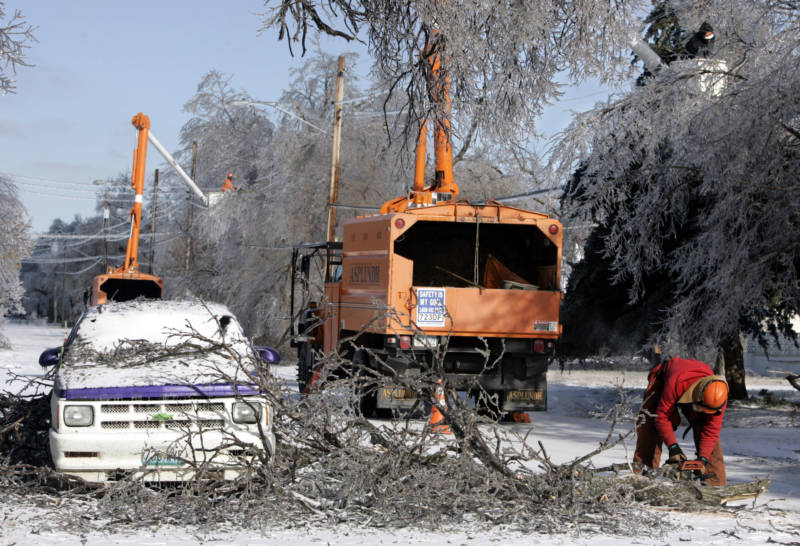“It’s a serious loss that they’ve had to compensate [for] by recruiting all over the country,” said Tom Dalzell, business manager at IBEW 1245.
“As an agent of the utility, [Asplundh] was subject to the law of inverse condemnation,” Dalzell said, referring to the state law that holds utilities responsible for wildfire damage caused by their equipment, regardless of whether they were negligent. “That’s not found in most states. With the very high fire risk in PG&E’s service territory, combined with drought and forestry practices, it’s risky doing business. I wouldn’t be surprised if that entered into their thinking.”
Asplundh did not reply to several calls from KQED requesting comment.
Cal Fire had previously determined that PG&E equipment was responsible for 18 of more than 170 wildfires that swept Northern California in October 2017. The fire agency said it had found evidence that the utility might have violated state law in 11 of those incidents and referred cases to local prosecutors. Although Cal Fire has yet to make a determination into the cause of November’s Camp Fire, PG&E said in March it’s probable that it was responsible.
PG&E said Monday many of Asplundh’s tree trimmers and subcontractors have been retained by other vegetation management companies to perform similar work, but the utility couldn’t offer a specific number.
“The number of vegetation management contractors fluctuates based on work volume,” PG&E said in an email to KQED. “On any given day, more than 1,000 contract tree crews — about three workers per crew — are working throughout PG&E’s service area to prune limbs or remove trees that have potential to come into contact with overhead power lines.”
Since October, Dalzell said, there’s been a hiring surge aimed at supplementing normal fire prevention efforts with both tree trimmers and linemen, who maintain the power lines.

